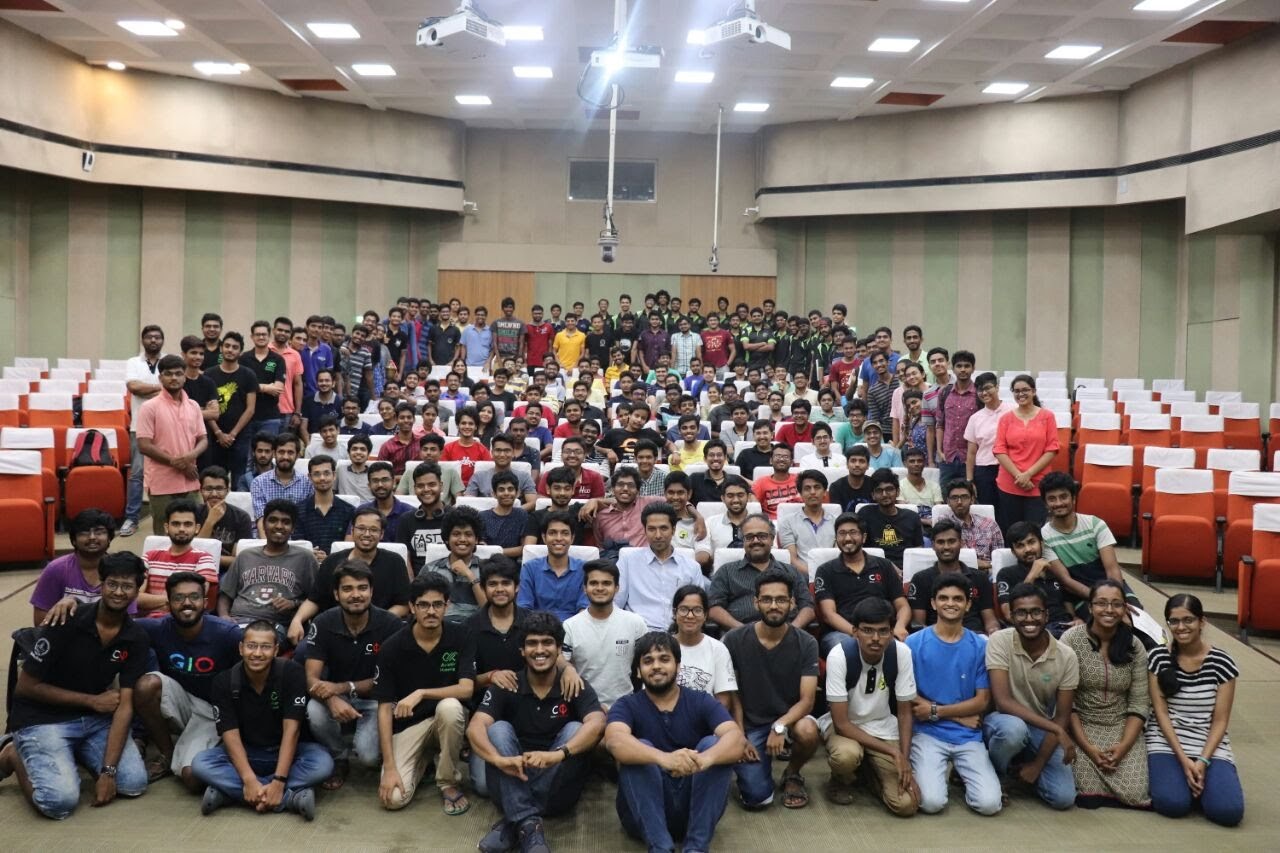CFI, the place that captures the imagination of several tech-enthu junta and is buzzing with activity throughout the day (night!) is an ecosystem that is special to Insti. Many of us have some part of CFI within, having gained something out of it and contributed something to it, too. So, how did it all start? How did the idea of CFI evolve, how did it become so inclusive and supportive of ideas, and how much effort had to go into setting it up? T5E decided to catch up with some of the former heads of CFI and trace its journey from the point when it was just a ‘hobby club’, quite literally, to the organisation it is today. Read on for a journey through the past, into the painstaking work, intriguing ideas and some fun stories which culminated in the formation of CFI!
Hobby Club, the precursor to CFI, had heads who were brilliant as far as their expertise in tech was concerned. However, inclusiveness was a long shot. Back in the 2000s, students would work on projects called the Spirit of Engineering (SoE) Projects which were funded by Shaastra. These would be about seven to eight in number each year. Students would also form teams to take part in design competitions conducted by TI, DRDO, and the like. These projects paved the way to the creation of some of CFI’s most iconic planes and robots. Back then, impartial selection of Shaastra team members was scarce: students who maintained close ties with the cores were preferred over students who may have had actual talent/interest in working in a certain position, until the intervention of the faculty in 2006, who began to ensure that the selection happened on the basis of merit. However, Shaastra was limited in its impact- Shaastra inspired many, but not so much acted. The responsibility to act lay more on the Hobby Club, which, by then, was mired in internal conflict and mismanagement of resources.
The very idea of a new CFI first sprang up when the Batch of 1981 graciously decided to sponsor projects with a sum of one crore rupees, which received the approval of the administration of Insti.
The Core team of Shaastra 2006 decided to step up and improve the situation of Hobby Club. However, with lots of suggestions and ideas pouring in, they were not able to get things moving as fast as they had expected to. In 2007, a certain Amrutash Misra became the Hobby Club Core after sharing his ambitious idea- to disband Hobby Club and bring in CFI. Needless to say, owing to the diminishing reputation of the Hobby Club and the students desperately wanting a change, Amrutash won the elections with a huge mandate. He then assembled a team of ‘thinkers and doers’, and they sat together trying to chalk a manual of sorts for what CFI would do, what it would need, and how it would go about ticking items off of this to-do list. Following the success of two Spirit of Engineering Projects in 2007, ideas were invited for more in 2008 and these projects were brought under the wings of CFI. And there were so many of them! There were ten SoE projects in 2008 with a hundred students working, this meant that CFI was heading in the right direction- the direction of inclusiveness! Till date, this remains the mission of CFI- supporting large student-team projects. All those who had a dream (and some of the existing clubs which were working in relevant areas) were roped in under the umbrella of CFI.
Starting 2009, IITM started taking part in Robocon, an Asian Oceanian college robotics competition. Teams for robotics competitions were the first to materialise in CFI, with robotics capturing the fancy of students. Not surprisingly, Robocon was a big deal for our students. They participated in the competition until 2014 after which, for several reasons (including the competition not being challenging enough!), they switched to participate in the University Rover Challenge and, lo and behold, Anveshak was born. Our Robocon team managed to go to the world finals every single time they participated, eventually reaching their pinnacle in the year 2013, when they catapulted to the top 5 in the world finals and also secured the coveted “Fastest Job Solving Bot Award”. It is impeccable that a completely student-run team with no external assistance was able to achieve something of this level. Their triumphs continue to inspire Insti’s student community to rise to greater heights, and spurred the creation of Raftar and some of the other stalwarts we see today. All of the other, more diverse teams became part of CFI only later: the iGEM team (a BioTech competition born at MIT), the Programming Club, and the Electronics Club are only a few among a myriad.
While the role of the Core team slowly started to evolve and broaden, taking care of CFI was still the responsibility of everyone involved. The major competition teams, such as Robocon and Raftar, had traditionally been involved in maintaining the facility on a day-to-day basis, simply because they were always around.
As more and more people started taking part in competition teams, projects, and clubs, there came a need to expand the organisational structure, and so, in 2011-12, the organisational team started to grow.
Of course, any success is not only about overcoming difficulties but also about recovering from failures.
CFI is no stranger to failures. In the year 2013-14, a massive expansion of club activities was planned by the head. Unfortunately, it did not work out properly because of a lack of coordination among the club heads. The number of club sessions dwindled and so did the participation of the student community in CFI. Adding fuel to the fire, 2013-14 was the year when freshies were allotted separate hostels. This led to a depreciation of the inter-hostel LitSoc and TechSoc culture, as the juniors spent a year without the guidance of their seniors and the seniors didn’t have fresh blood in their ranks to compete in the tournaments. High-preparation events like Manual Robotics and Autonomous Robotics took the worst hit; these were the events that encouraged the participating students to enter CFI. This double whammy shot CFI into reboot mode for the next couple of years.
One flaw which persisted through all these years was that club heads were not originally part of the Core team. This was resolved in 2014 when CFI was under Siddharth Dialani, who decided that the Core team included all the club heads plus a bunch of student managers that did everything ranging from facilities and PR to alumni relations and project management. Thus, the club heads were inducted into the organisational team of CFI. In the following year, CFI was led by Saikanth Dacha, and the organisational structure received two major changes on the managerial side:
- The Project Management Team was established based on the previous years’ experiences.
- A dedicated PR & Alumni Relations Team for CFI – this was quite a new development at the time, since it meant that CFI wouldn’t be getting direct funding help from Shaastra anymore in that front. This move was to ensure self-reliance of CFI in all respects and could be considered a bold move as it brought a lot of additional work under CFI.
Funding was another major issue back then. While CFI now enjoys a strong bond with Nirmaan, it wasn’t always the most pleasant scenario. The Core team used to have to bargain with the Insti administration for funds, and even then, they did not succeed in obtaining funds each time. Given that the then faculty advisor discouraged participation in competitions, it proved to be taxing to find a way to speak to someone in the echelons of Insti administration. Towards the end of 2015-16, however, Insti administration started paying attention to the value of CFI (with the Director himself taking a special interest) and the situation has significantly improved since then.
Competition teams used to manage funding their work primarily by having the members pool in money and then repaying them (in some cases, years later!) when they managed to get some money either through sponsorship or from the Gymkhana budget.
Let us not forget the Open House! The annual event of CFI was traditionally visited by the campus community- students, and professors brought along their families and kids. Gradually, things picked up and Open House soon came under the interest of several others- the media, students from other colleges, industry, alumni, and so on. Open House began to be scheduled during alumni meets so that CFI may leverage the visibility to alumni and, consequently, potential funding. The Open House continues to play a major role in bringing media attention as well as getting projects professor assistance or industrial support.
The trajectory of CFI could go on to be boundless and infinite, but this article cannot be, which is why we pause right here. We shall continue the story from 2016 to the present and the future in Part 2 of the Chronicles of Hobby Club.
One major takeaway from here is the selflessness of the founders and the initial Core teams of CFI. The founders were never able to enjoy the fruits of CFI, and the Core teams invested their own time and money into making CFI a better place for the juniors to come. It is their determination, dedication, and passion for technology that built us a CFI we now have the opportunity to truly cherish. The onus is now on us to contribute to making a CFI a better place for our juniors.
We would like to thank all the former heads (who have obviously graduated) who agreed to share their fond memories in CFI with us. Without them, this article would have been impossible.
Series by: Akash Reddy




